Planet Earth began its existence as a ball of fire entirely different from the Earth we know today, and after going through cataclysms, impacts, glaciations and countless astronomical phenomena, it eventually transformed into what we have today.
In the gaming world, on the other hand, many people don't even realize that this type of information is relevant when developing a new Universe to be portrayed and explored to the maximum by its players.
League of Legends is a MOBA (Multiplayer Online Battle Arena) that features almost 170 playable champions and is part of a fantastic world created with a lot of care by the developers at Riot Games: Runeterra. This world, with its continents, islands, people, cultures, songs and unique visuals has been explored, expanded, improved and worked on for over a decade, and offers us enough content to spend days, weeks or months reading stories and information collected on the League Universe page.
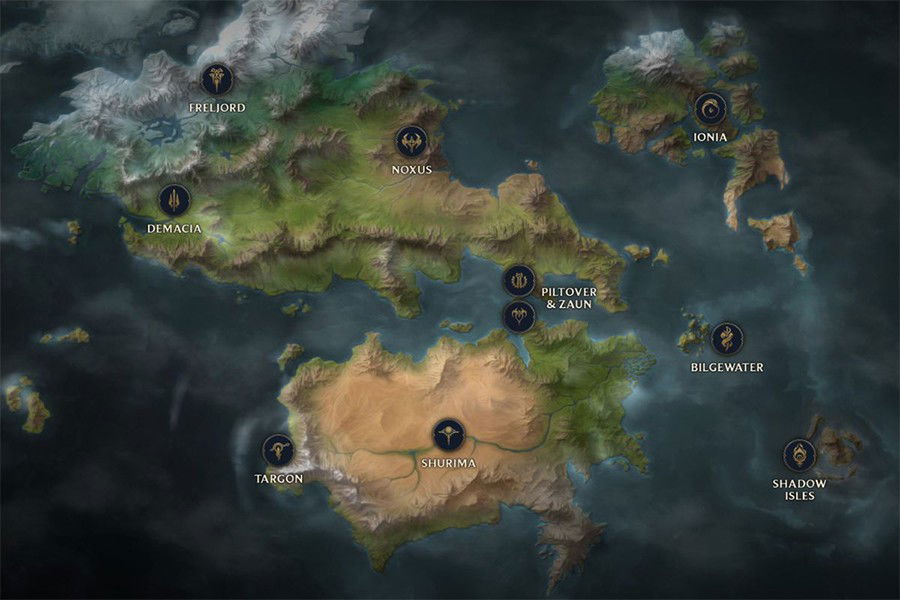
With Riot's latest announcement confirming that all versions of the Runeterra universe that have been presented to us are being merged into a single canon one - it being the version used to produce the Arcane series, which is about to launch its second season on November 2024-, Um Gamer is here bringing a timeline to guide fans and players through the order of events that made Runeterra what we know today.
We remind you that, if you are not familiar with important details or more relevant stories about the LoL universe, this article may contain Spoilers!

The Void and The Existence
At first, there was nothing. The universe was just dark and empty infinity, so empty that even the creatures that lived in it didn't even know they were alive. With the beginning of existence - which the game never made clear whether it was some kind of Big Bang or the work of some other sentient creature like Aurelion Sol himself or other Celestials - such creatures of the Void became uncomfortable.
What was once dark, quiet, and cozy had now become bright, noisy, and uncomfortable. In the midst of this existence, the world that was once known as Runeterra was eventually born.
O que antes era escuro, quieto e aconchegante agora se tornara claro, barulhento e incômodo. No meio desta existência, nasceu eventualmente o mundo que foi conhecido como Runeterra.

Runeterra was not an ordinary planet, but a planet which orbited one of the countless stars created by Aurelion, and from the beginning it had both a physical plane and a spiritual plane, filled with magic and lives that quickly began to proliferate. Among so many primordial lives that emerged, it is important to highlight the ancient existence of the first Yordles, responsible for connecting the two planes through a complex system of portals through their own ethereal land, which eventually became Bandle City.
Meanwhile, the planet's seas and continents took shape, most notably due to the activity of powerful creatures known as Demi-Gods or Celestials. Champions like Volibear, Ornn and Anivia, for example, emerged around that time and were responsible for shaping Freljord as it’s currently shaped.
Eventually, other races, species and people evolved and established themselves, creating and solidifying their cultures, technologies and first societies. Most notably, the people of present-day Ionia - still known then only as The First Lands - are the oldest people of Runeterra.
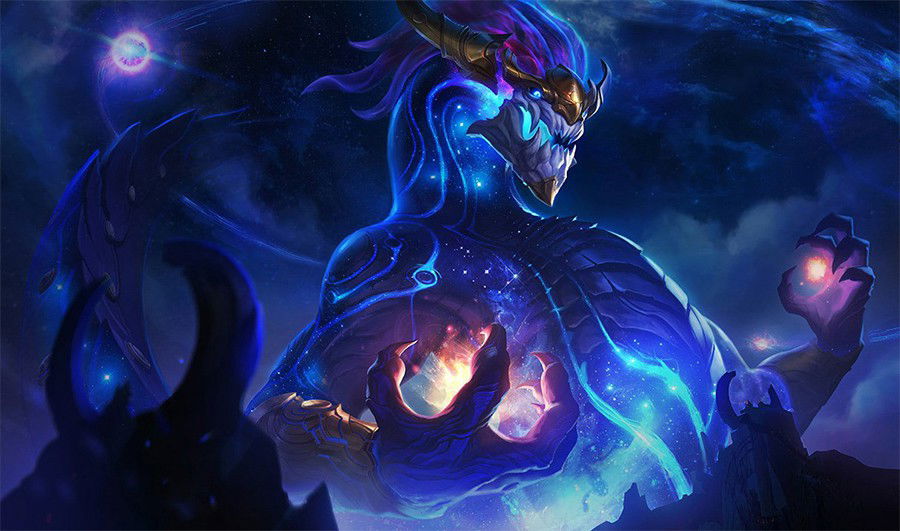
Humans and other mortal people eventually began to populate the great continents such as Camavor and Shurima, starting with the jungles where we now have Ixtal. The champion Skarner, after his recent rework, was born a little before this migration. Meanwhile, in the First Lands, people fused with the powers of the spiritual plane to face Giants from the Skies who threatened them, becoming the first Vastayashai'Rei, gaining near-immortality and abilities over Nature, capable of defeating such enemies. After a long and bloody war, the Vastayashai'Rei began to live together with their mortal partners, and this union evolved into the more modern race known as the Vastaya, with humanoid and animal aspects mixed up and great powers over spirits and natural elements around them.
The War of The Three Sisters
Meanwhile, in the cold and dangerous lands of Freljord, tribes spread out worshiping the different Demi-Gods who shaped the lands, and when three sisters - Serylda, Avarosa and Lissandra - tried to learn to control the powers offered by the powerful deities, they were confronted by the Volibear himself, while Ornn protected humans with more reasonable and fair critical thinking
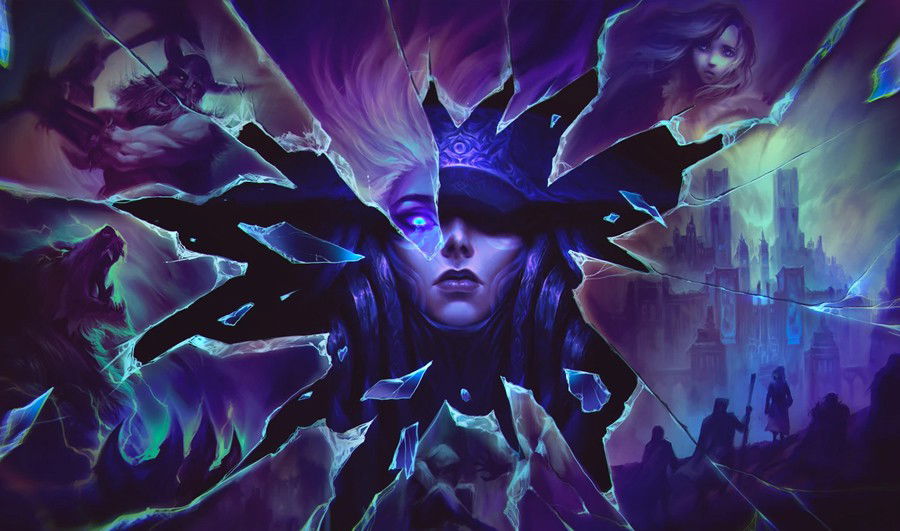
With Lissandra making a pact with the Watchers from the Void, gaining immortal, dark powers in exchange for facilitating an eventual invasion of the unknown creatures upon Runeterra, the sisters won the war against the ancient Gods and ended up allowing the Void, for the first time, to infiltrate the existence in cruel, powerful and destructive ways. Not agreeing with the pact made by their sister, Serylda and Avarosa took their separate paths and joined to defeat Lissandra and the dangers of the bizarre Non-existence.
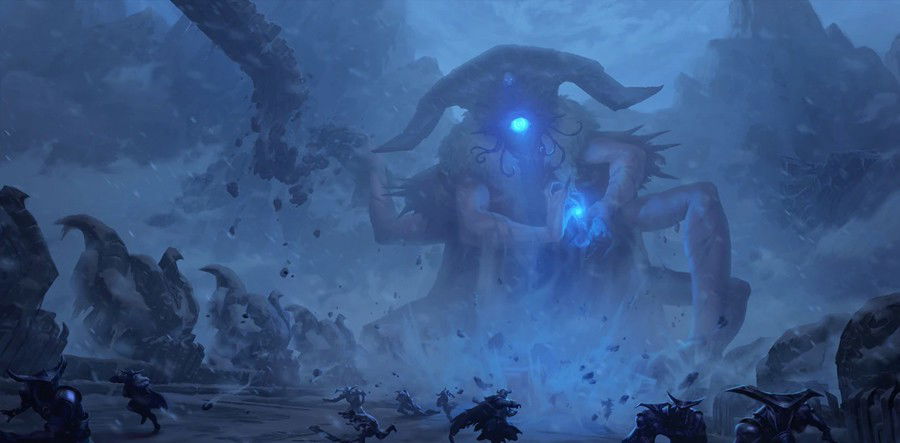
Only upon observing the extent of the destruction caused by the Void did Lissandra realize the mistake she had made and, in a desperate attempt, performed a ritual that ended up sacrificing her two sisters and all of their armies present to conjure a barrier of True Ice that keeps the Observers trapped between the two planes. Although only a temporary solution, Lissandra remains leader of the citadel where this barrier exists to this day, doing her best to ensure that it does not break, and the modern world does not even get to know of the existence of the frozen Watchers.
The Great Civilizations
With so many migrations from the First Lands to nearby continents and archipelagos, several new civilizations emerged, such as the Buhru people in the Serpent Islands who eventually gave birth to the Bilgewater, the Ixtali who populated all of Shurima and Valoran, and even the Blessed Isles with their sacred waters protected by Mao'Kai, while on the other side of the ocean the continent of Camavor established itself with its kingdoms, culture and dragons.
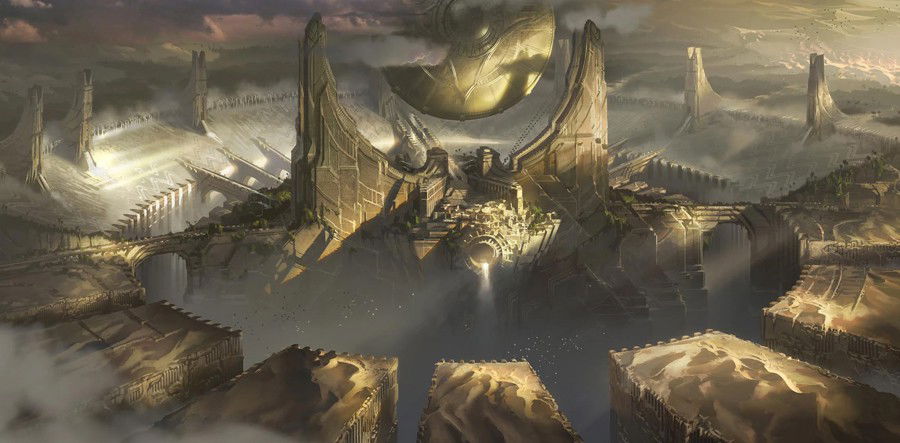
One of the first great cultures established in Runeterra was in the far west, on Mount Targon, where people discovered the powers of the mountaintop and began to worship their Celestials and the Aspects. Characters like Bard and Soraka, despite being much older than that, are important in the development of the cultures in this period. It didn't take long for the desert people to create their own version of such religions, and they built the first Sun Disk in Nerimazeth, which eventually went wrong and forced the migration of the desert people to its center, eventually founding the great empire of Shurima with a perfectly functioning Sun Disc.
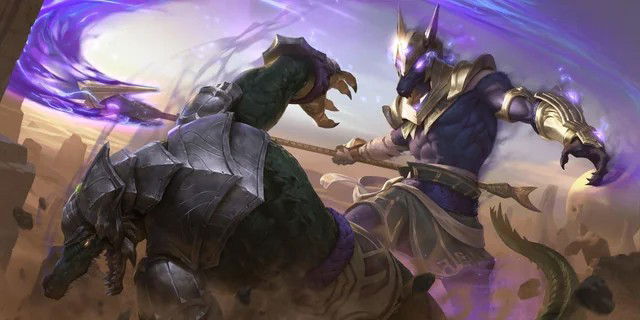
The great capital of Shurima increased its power and expansive dominance across the continent through its magic and the Sun Disc technology, granting the Ascension to its most powerful monarchs and warriors and creating an army of God-Warriors. Renekton and Nasus are examples of champions from this period. With the help of such powerful warriors, Shurima took control over practically all the lands around it as part of the empire, and only the annex nation of Icathia refused to join it.
When war imploded between the two nations, this time it was the Icathians who played the wrong trick and asked the Void for help, opening a portal that immediately consumed the entire region and allowed countless voidborns to invade Runeterra. With the help of the God-Warriors, the Void fissure was eventually closed, but Icathia had already been completely corrupted beyond recognition. Champions like Jax and Zilean come from this period. It was also during this period that Ixtal completely closed itself off from the rest of the world, to defend itself from the dangers of the Void.

A few hundred years later, due to a mutual betrayal of the new emperor Azir and his until then faithful friend and slave Xerath, the leader's ascension ritual failed and caused the destruction of the Shuriman empire and Xerath's eternal imprisonment under the desert sands, since he was locked away for completely consuming the power of the Solar Disc and becoming an absurdly dangerous creature.
With the end of the Empire, the remaining God-Warriors violently dominated the lands for several generations, until eventually, they were corrupted by the remains of the Icathian battles and the Void, transforming them into the Darkin and starting a new deadly war. It was the Aspects of Targon who came to defeat them and put an end to their age of terror. The Darkin, in turn, had to be trapped in their own weapons and put to sleep, as they were immortal. Champions like Aatrox and Pantheon come from this period.

Mordekaiser and The Shadow Isles
Long after the fall of the Shuriman empire and the Darkin wars, the world experienced yet another age of terror. Having his base in the east of the continent of Valoran, a tyrant named Sahn Uzal began to dominate all the lands around him, making use of fear and violence. Uzal believed that if he killed enough people and won enough battles, the Gods of death would sit with him at a great banquet when it was his turn.
Uzal was also responsible for the construction of the Immortal Bastion, an imposing work of brutalism and robust architecture, as a fort for his armies and a display of his immense power.
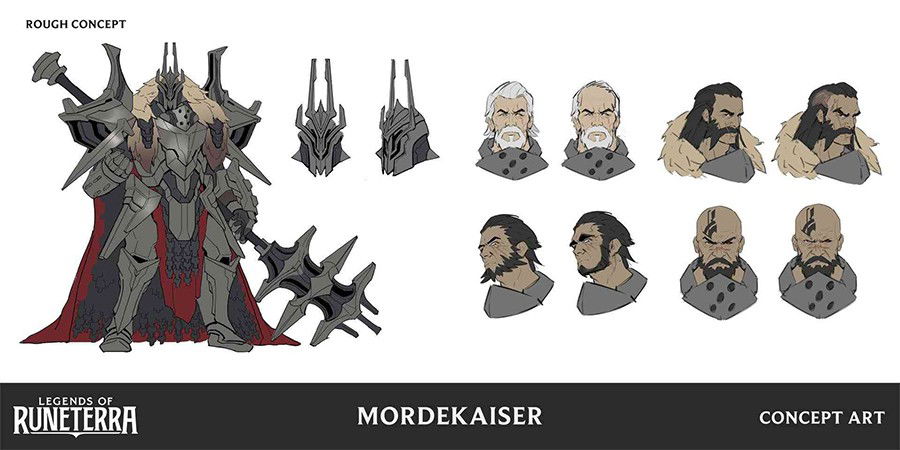
When the tyrant eventually died, however, his spirit realized that there was no world of the dead as he imagined, and no one was waiting for him to feast. Upon learning to speak the language of the dead, Oknun, he called himself Mordekaiser - the Lord of Death - and consumed the souls around him to build his armor and weapon, aiming to return to the world of the living and continue his tyranny.
With so much power and revolt, Mordekaiser became a danger even to his own people and his army, the Noxi, and it was thanks to the powerful mage LeBlanc, founder of the Black Rose, that the bloody emperor was once again imprisoned within his own Immortal Bastion.

Years after the end of Uzal's empire, the kingdom in the distant continent of Camavor faced a crisis when King Viego was driven insane by the death of his wife, Isolde. As a last desperate attempt to bring her back to life, the king ordered his army to take them to the Blessed Isles, where the powerful waters could perform such a miracle.

With a story full of twists, betrayals and drama which can be known both by playing the game Ruined King and reading the book Ruination released by Riot's own writers, the events end with a catastrophe hitting the island after Viego's insane despair causes the ritual to go wrong. With the isles ruined and shrouded in a black mist that unites the physical plane with the spiritual plane, all inhabitants, animals, invaders and creatures around the island have died or became terrifying specters.
The black mist often becomes denser and stronger, trying to spread to the closest regions such as the Serpent Islands, Ionia and Bilgewater, in events known as Harrowing. In addition to Viego, Kalista, Thresh and Hecarim are also from this period.
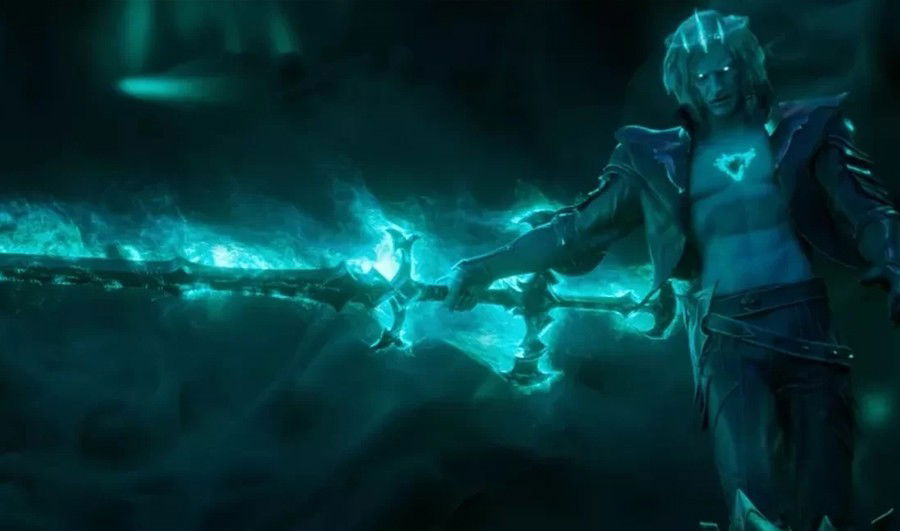
With the city of Helia, capital of the blessed isles, now destroyed and the new Shadow Isles being completely ruined, the secrets that the great wizards there kept about the World Runes ended up leaking little by little, and nations began to become suspicious of one another, generating constant panic in the growing civilizations that were expanding across Runeterra.
The Rune Wars
With the Runes lost around the world and being taken by the wrong hands, an immense war began rising everywhere, causing mass destruction with the power of such powerful artifacts. These wars generated so much fear that they gave rise to new cultures and people that emerged precisely due to the panic caused by such brutality.
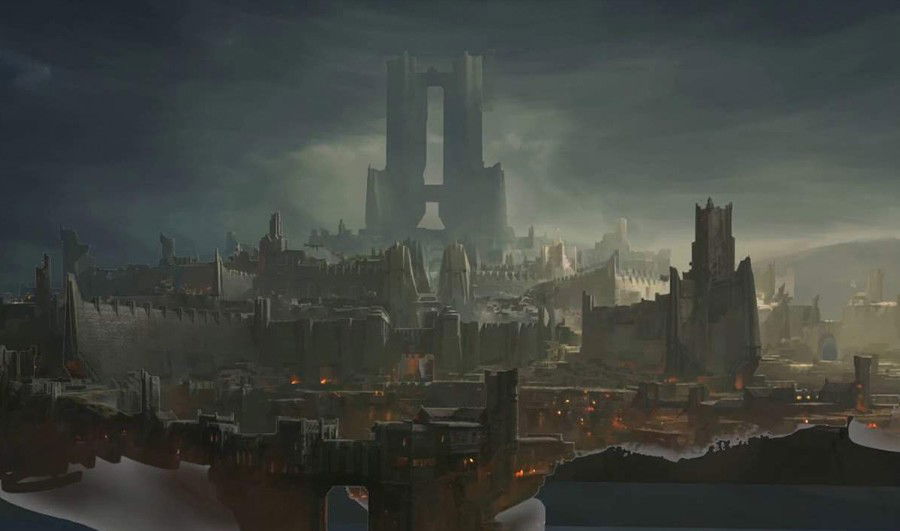
The people of eastern Valoran have united under the Immortal Bastion, taking advantage of its immense metal barriers as a shield against the powerful magic of the Runes. Even if unintentionally, Mordekaiser's own magic may have helped the Bastion become resistant to such power, and the people who united under the capital of the Noxi eventually became Noxus.
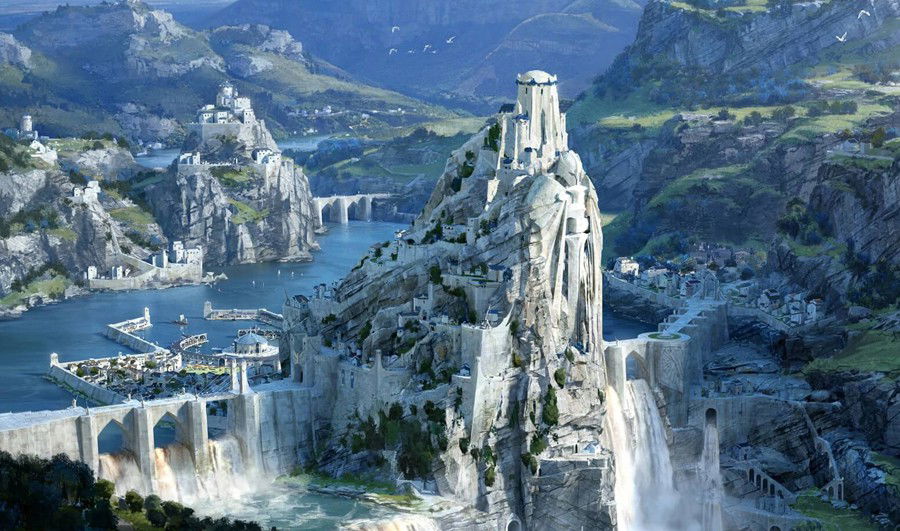
On the other side of the same continent, a forest made of huge white trees known as Petricites had the power to absorb magic, providing a natural shield to the region's residents against the evils of runic magic. Uniting beneath the petricite walls of their now capital, the people of the west founded Demacia with its extremely prohibitive laws regarding magic of any kind.

The establishment of Noxus is officially used as year 0 in Runeterra's calendar, just as we use Before and After Christ in ours. The rune wars never really had a set end, but it was the efforts of Ryze - a powerful wizard who fought his own master for the good of the planet - and his immensely longer than normal lifespan, that Runeterra eventually saw fewer and fewer of these artifacts until they became nothing but legends. Ryze is alive to this day and continues to search for each of the Runes that are still lost.
Modern History of Runeterra
After Year 0 and the establishment of Noxus and Demacia, great cities and kingdoms began to emerge as we know them today. Searching for a safe passage for merchant ships between the two continents, the ancient Shuriman city of Oshrava'Zaun began plans to blow up a piece of land, connecting the two seas.
Due to wrong calculations, the explosives ended up sinking most of the city in the process, giving rise to the dark city of Zaun. Janna was responsible for saving thousands of lives after the incident, becoming one of the most worshiped spirits by the Zaunites to this day.

On the banks of the new river that emerged after the explosion, the river Pilt, a new city was built on top of Zaun and would quickly become rich due to merchant ships exactly as planned, and the great city was named Piltover. It was around this same time that refugees from the expansive Noxian empire and the final battles of the Rune Wars began to inhabit more and more of the Serpent Isles, turning Bilgewater into a large port city led by merchants and mercenaries.
Centuries of evolution and development of nations took place, and we have reached the most modern days of League of Legends. We have the events of Arcane, which are apparently linked to the Noxus War against Ionia, and we will only find out how at the launch of the second season, in November.
This war ends with the defeat of Noxus after the famous battle of Placidium, with important characters being Irelia and Karma, as well as Darius and Swain - these two took power from Noxus and formed the new government, more inclusive and fair, based on the Trifarix (the third leader being, secretly, LeBlanc).
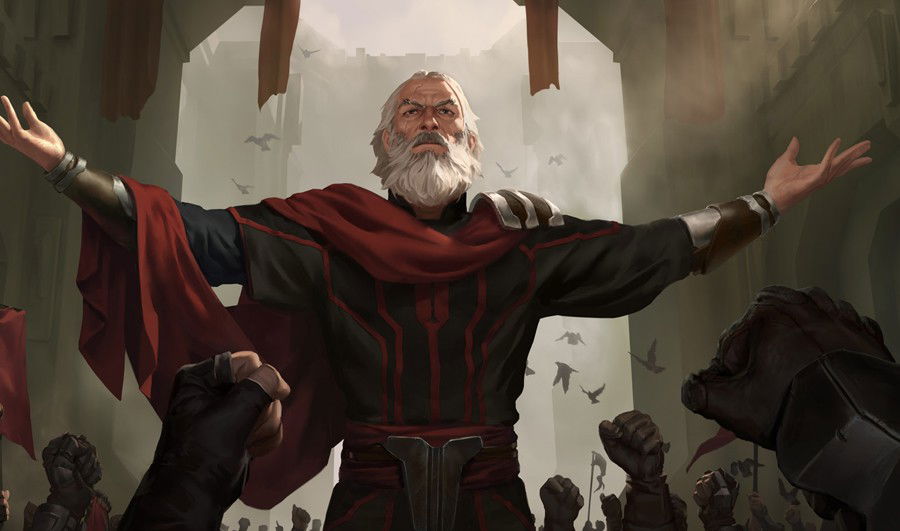
Other modern events also involve the Demacian insurrections, started by Sylas, against the discrimination that their citizens practiced against mages in general; the comics released by Riot about Zed, Ashe, among others; Azir's return and his new attempt to rebuild the Shuriman empire, Miss Fortune's taking control of Bilgewater by defeating Gangplank, among other countless tales and stories that can be followed through cinematics and through League Universe.
And We Got to the Present!
With such a rich story and such detailed and well-crafted worldbuilding, it is normal that there are still some Retcons and corrections to be made - especially after the announcement that the universe would be unified into one canon. Therefore, it is interesting that we keep an eye on new releases from Riot and League Universe, as well as Arcane and other media to update or correct anything that may become outdated over time.
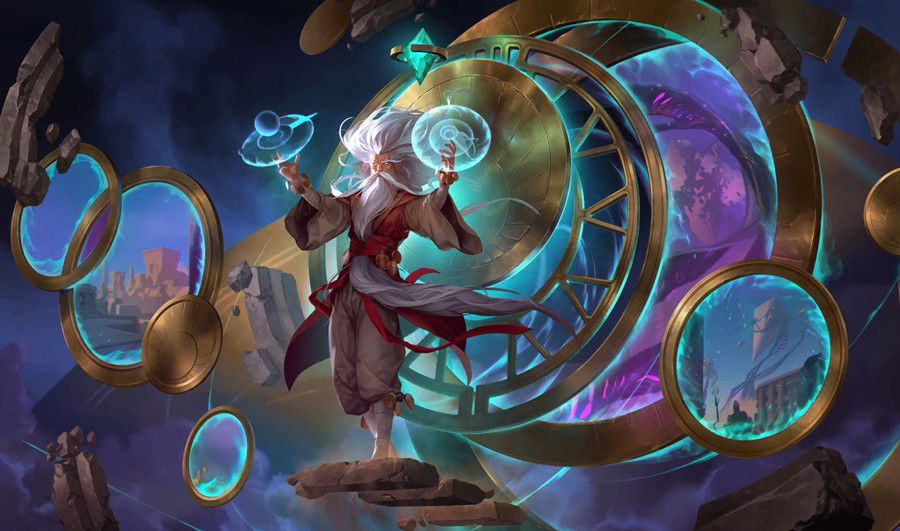
Still, it's jaw-dropping to see a summary of Runeterra's timeline and see how events happen, pave the way for other events and their consequences are completely connected with what we have today to enjoy such a rich world. From the Legends of Runeterra cards to the lines considered Easter Eggs that champions occasionally speak out during the games on the Rift, when everything connects you realize how much care, effort and hard work was put into producing the characters and their surroundings.
Many players didn't even know that the 168 champions released to date are not necessarily characters who were alive in the same periods. Mordekaiser is not walking the streets of Noxus, but is in the afterworld, imprisoned and planning his return. Meanwhile, Shadow Isles characters are once-dead warriors, and their playable adaptations are their spectral versions that haunt the mist.

League of Legends is a battle stage to unify the entire history of a rich universe into a single combat scenario. These characters are not just citizens, but are literally Legends of some period of time, lost tales passed down from generation to generation in tribes around the globe, aspects and concepts based on the way these characters themselves and their countrymen see them. This delicacy in each part of the construction makes us increasingly excited for new releases and, definitely, for Arcane 2.

What do you think will be different in this incredible universe after the second season of the series premieres? Tell us in the comments, and UmGamer will come back in the future to compare all this and see what changed, after all.









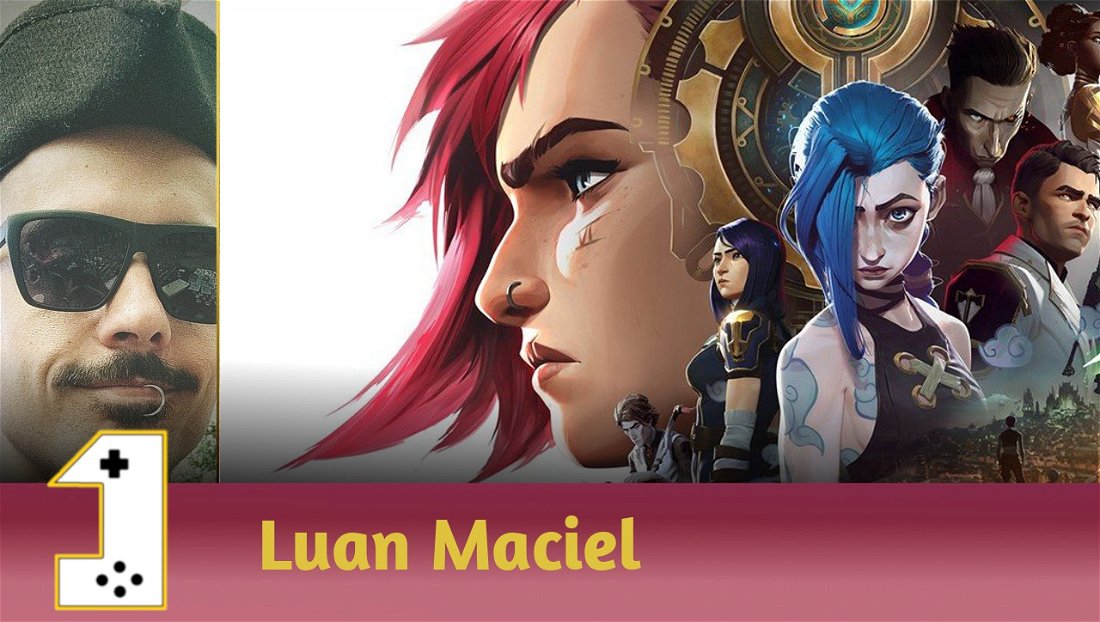
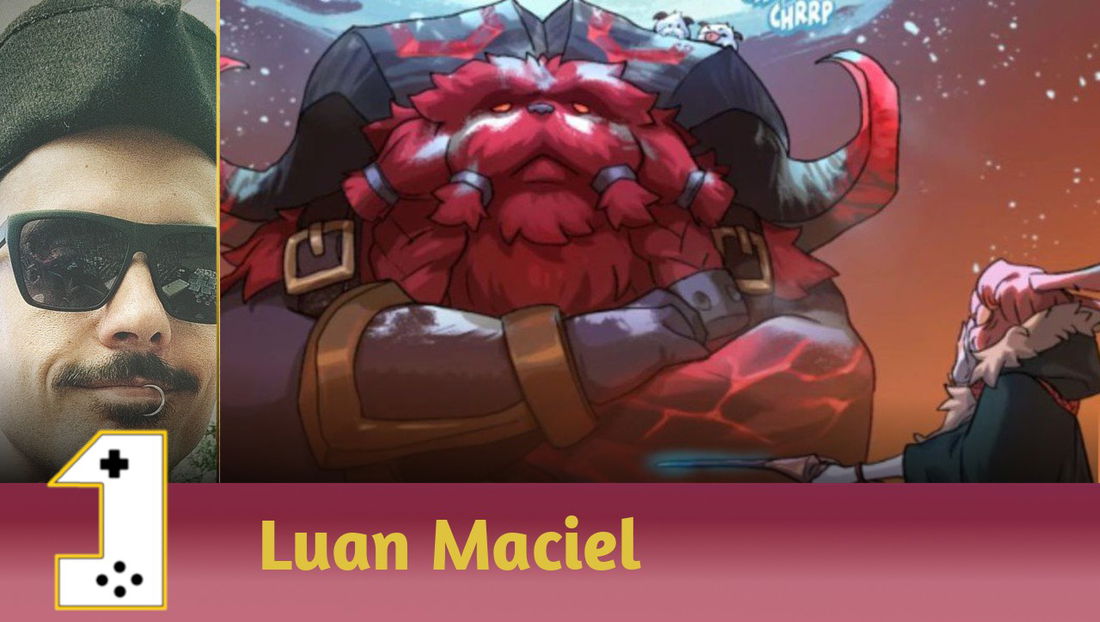

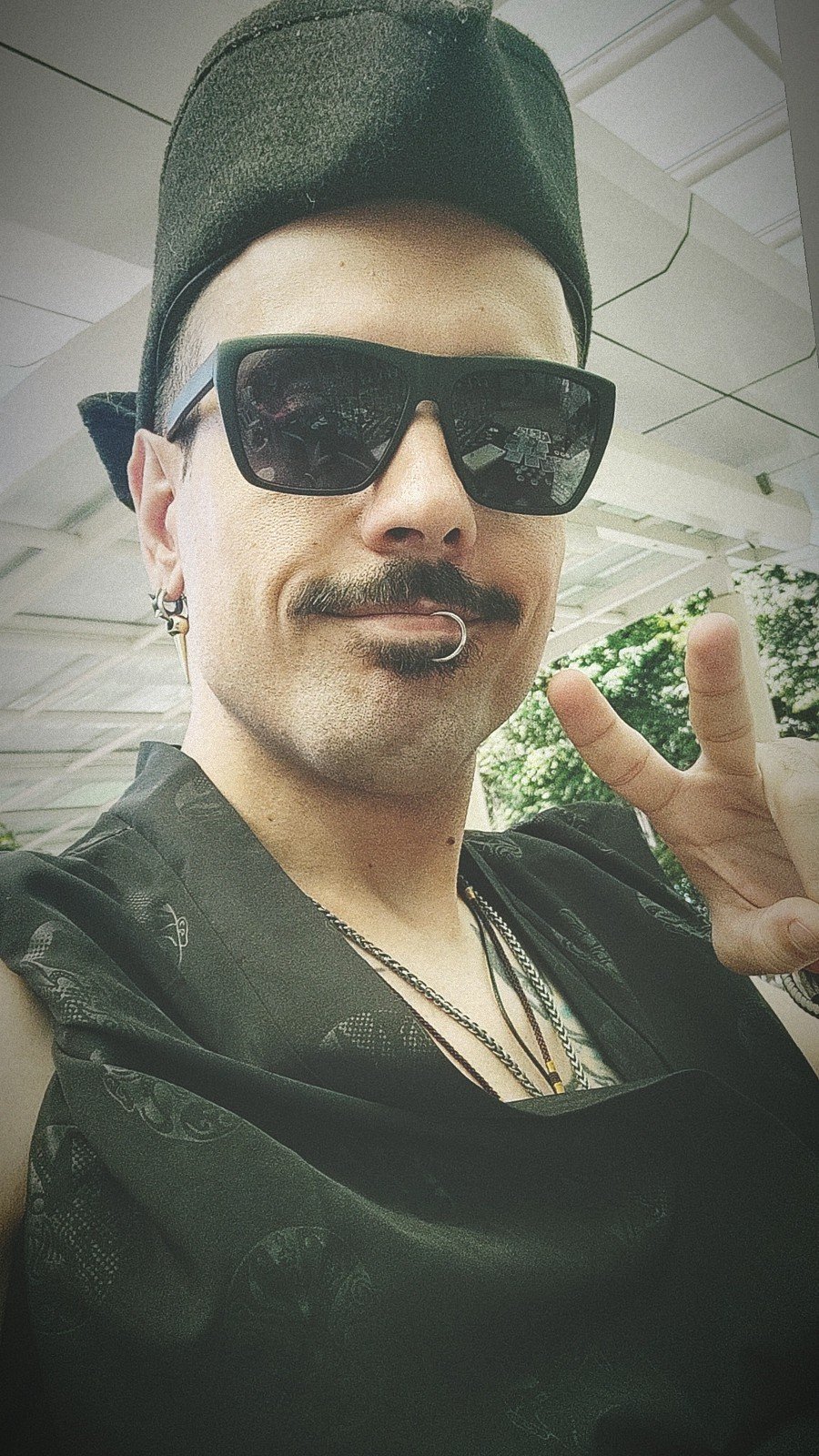

— 코멘트 0
, 반응 1
첫 댓글을 남겨보세요